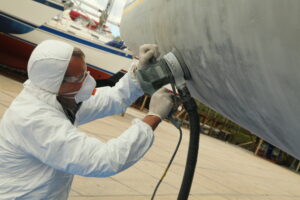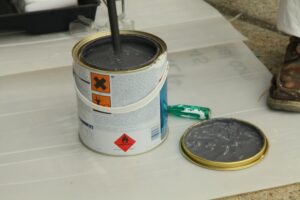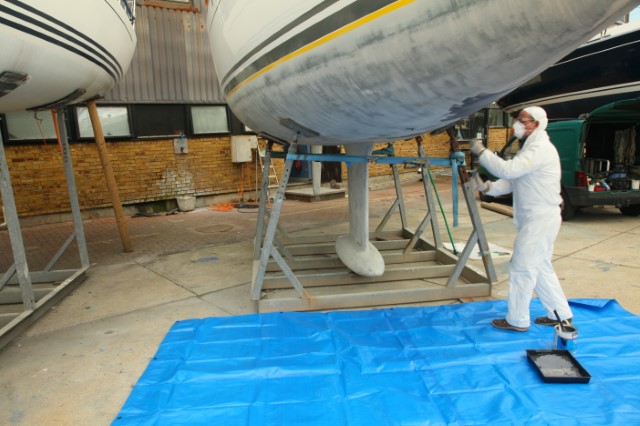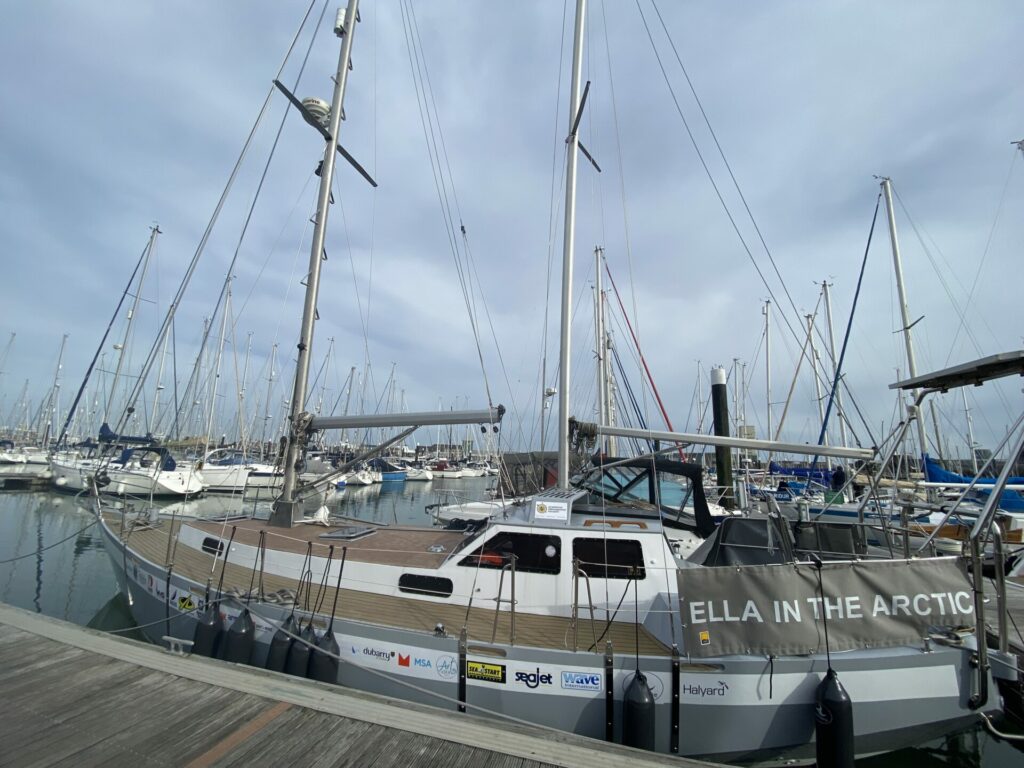What’s the environmental risk?
Leaving a trail of paint flakes and coatings isn’t just unsightly, antifoul paints are by their very nature toxic to aquatic life so any remnants can have a real negative impact on the health of local habitats and wildlife. Some of the toxic compounds in antifouls can accumulate in small marine organisms which in turn increase as multiple organisms find their way further up into the food chain.
How can I prepare the hull with minimal damage to the environment?
When washing your boat ready for anti-fouling, using portable bunding will captures antifoul contaminants from your runoff. You can reduce dust and shards of dry paint finding their way into the environment by wetting the hull with a damp cloth before scraping. There is also the option to hire an industrial vacuum-cleaner which can be linked to a scraper tool helping to capture any loose dust.
contaminants from your runoff. You can reduce dust and shards of dry paint finding their way into the environment by wetting the hull with a damp cloth before scraping. There is also the option to hire an industrial vacuum-cleaner which can be linked to a scraper tool helping to capture any loose dust.
When sanding down, it is also a good idea to place a tarpaulin or groundsheet underneath the boat to collect loose debris. The sheet can also be re-used for capturing drips when painting the hull too.
Is it more expensive to follow best practice?
Following best practice techniques is not costly, although they may take slightly longer to carry out. Using alternative anti-foul paints such as, silicone or Finsulate do vary in costs, although the may need to be replaced less frequently. Remember to shop around for the anti-foul that is best suited to your frequency of use, environment and vessel. Anti-fouling your boat shouldn’t cost the earth. You can find advice on which antifoul option to use on the Choosing an Antifoul page.
Are there any easy wins?
Yes, of course! Avoiding strong chemical paint strippers will reduce the chance of toxins entering nearby water – and you may get more of a workout too! Simply changing to a roller instead of a brush when painting can minimise paint drips and will give your hull a more consistent finish. When your task is complete, collect all items that have been contaminated by paint and remember to dispose of them in a bin marked for hazardous waste.
water – and you may get more of a workout too! Simply changing to a roller instead of a brush when painting can minimise paint drips and will give your hull a more consistent finish. When your task is complete, collect all items that have been contaminated by paint and remember to dispose of them in a bin marked for hazardous waste.
For further advice on applying antifoul, visit the Info and Advice pages. You can help by sharing The Green Blue’s #ProtectCollectDispose posts on social media, and by downloading antifouling best practice posters and infographics from The Green Blue website and displaying them at your local club.




